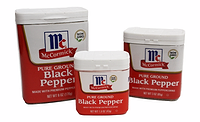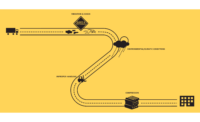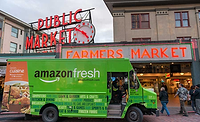Food Packaging
How retail changes are affecting packaging
Mike Kresbach, Bemis North America, says food and beverage companies need to create packaging that works for C-stores, dollar stores and club.

The cool new trend in packaging these days seems to be eCommerce. But Mike Kresbach, V.P. of marketing at Bemis North America, says that’s just one part of the changing landscape.
Kresbach recently spoke about the changes happening at brick and mortar stores during The Packaging Conference in Orlando, Fla., and he offered insight into how food and beverage companies can respond with better packaging options.
“Retail is still critically important to get right,” he says. “In terms of grocery, [eCommerce] is only 2 or 3 percent of total sales. Physical retail still really does demand our attention. And we see opportunities in aligning packaging behind these emerging channels.”
Kresbach says the rising income gap, shrinking household sizes, and the rise of snacking all are shifting how and where consumers shop for food and beverage.
Specifically when it comes to incomes, he says 100 million Americans live on less than $30,000 a year.
“It’s had a massive impact on how consumers shop and what they buy,” Kresbach explains. “This dynamic is perhaps the most pressing one on our customers.”
Meanwhile, households are shrinking, as the number of married couples with children under 18 decreases. And, snacking is rising. In fact, 95 percent of adults in the U.S. snack at least once a day, and 50 percent snack two to three times a day.
All of this is leading to a decline in the so-called “fill-up” trip, where shoppers would go to a mass retailer and buy groceries for the whole week. And that, in turn, is leading to a growth in other channels outside of traditional grocery.
“Shopping trips are evolving,” Kresbach says. “These changes are impacting CPG consumers.”
But it’s not as though consumers are spending more money on food and beverage, they are just spending that money at different types of stores.
“These additional growth channels came in addition to existing channels, they’re piling on top,” Kresbach says. “So this is not about replacement, it’s really, truly about fragmentation.”
For example, the gap between the middle class and the wealthy is driving growth in the dollar stores channel, which has to cater to different shoppers than a traditional grocery store. But most food and beverage companies seem to ignore this.
“We did a great job optimizing for Walmart,” he says, adding that now they need to optimize for everything else.
Kresbach points to the fact that most shoppers going through a Dollar General or a similar store only plan to spend $11 on their whole trip, which means items need to be sized so that they don’t cost more than $5. And that means that absolute package price matters more than anything else, which in turn means companies should sell smaller sized packages at lower price points than they would at a traditional grocery store.
“The basket price is the limiting factor in this channel,” Kresbach says.
On the other extreme, there’s club shoppers.
“This channel is defined by exclusivity and membership and saving customers money in a vastly different way than dollar stores,” he explains, adding that it requires another size for packaging, as customer looks to buy in bulk.
And of course, the C-store is an entirely different experience as well. At those, the typical basket is $6, it’s usually purchased within 2 minutes, and it’s consumed within two hours of purchase.
“It’s a distinct channel and it demands different packaging,” explains Kresbach, who adds that ideally the packaging should enable one-hand consumption.
This is all to say that food and beverage companies need to do more to design channel-specific packaging.
“Imagine the distinction between a Costco and Dollar General and a Walmart,” Kresbach says. “There’s a spreading difference, and yet if you were to peruse these stores, you’d find packages that look similar to what’s being sold in traditional mass market grocery stores.”
Kresbach says companies need to look at packaging innovation the same way they look at new product development and marketing, and apply the same level of resources — especially considering that 70 percent of purchase decisions are made at point-of-sale.
“Packaging drives purchase more than TV ads, online review and the recommendations from friends,” he explains.
And food and beverage companies ignore that reality at their peril.
“This is not stopping. New packaging is going to be more important tomorrow than it is today,” Kresbach says. “Growth depends on it, and I believe packaging is the path for driving growth for CPGs in these emerging channels. Packaging drives consumer choice.”
Looking for a reprint of this article?
From high-res PDFs to custom plaques, order your copy today!







